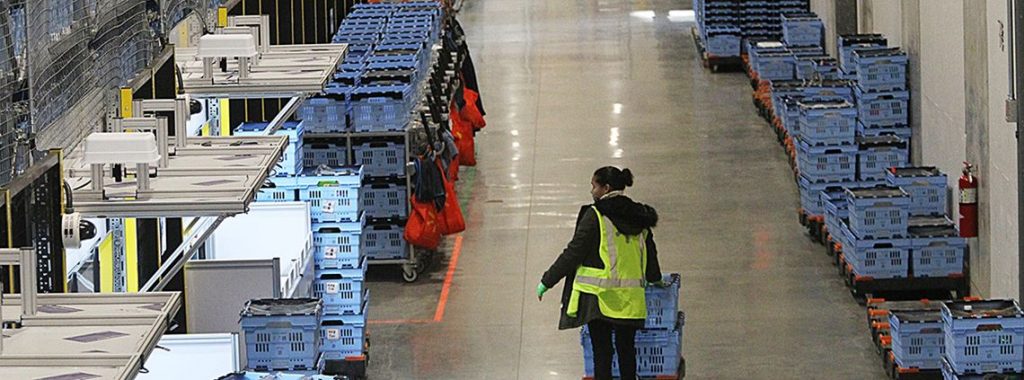Is robotics the answer to social distancing in warehouses?

Covid has triggered a rise in robotics technology in warehouses to prevent bottlenecks caused by staffing disruptions.
The pandemic has led to increased safety measures in warehouses and distribution centres, said Gartner. As a result demand for robotic systems is set to quadruple by 2023 as firms “pandemic-proof” operations to support social distancing and cut absences.
A report by Gartner said supply chain organisations are focusing on using robotic and automated handling systems to move products from storage to packing and delivery to protect workers.
This comes as Walmart announced it is building automated local fulfilment centres – small warehouses which use bots to retrieve and assemble online orders at speed – within or adjacent to stores.
According to Gartner, 50% of firms are planning to invest in artificial intelligence and advanced analytics capabilities to support such processes by 2024, as this is seen as “an easy and less invasive approach” to enforce social distancing while ensuring improved efficiency.
As a result of the increased demand, 44% of supply chain managers believe the role of robot engineers will be extremely important within organisations over the next five years.
Gartner recommended identifying ways robotic systems can be used within operations by studying movement of goods in warehouses, specifically looking for backlogs caused by the pandemic.
Dwight Klappich, VP analyst at the Gartner Supply Chain practice, said: “Fallout from the Covid-19 pandemic is increasing demand for robotics in warehouses and distribution centres.
“Goods-to-person systems are an easy and economical way to not only enforce social distancing, but also improve productivity.”
Logistics UK said: “The success of any return to work depends on operational weaknesses being identified and eradicated, or at least minimised.”
Walmart’s programme to build a number of local fulfilment centres, originally piloted in late 2019, will involve working with technology firms Alert Innovation, Dematic and Fabric to put in place automated robotic systems to handle faster processing and respond better to increased e-commerce demand.
Solely using automated systems to bring and assemble orders, with help from humans to pick fresh items and large general merchandise, allows the process to take only a few minutes from order placement to collection or delivery, said Tom Ward, SVP of customer product at Walmart US.
This could reduce the cost of picking online orders by about 75% said research firm Jefferies, according to the Financial Times.
Meanwhile, a study in The International Journal of Advanced Manufacturing Technology found augmented reality technology, using visual instructions instead of paper-based lists, could boost warehouse productivity, with pickers completing orders 37% faster with less errors.

